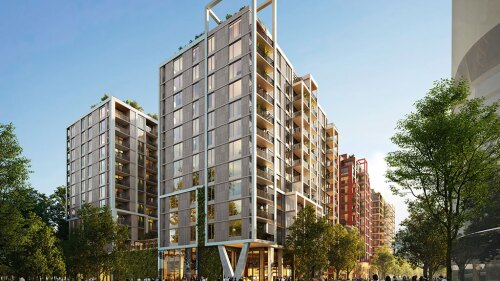Newly released data and analysis from several sources illustrate a major obstacle to a fully healthy housing market in the United States: the nation is not building nearly enough new residential units. The serious shortage of new supply is bottling up housing demand and pushing home prices and apartment rents well beyond what a growing number of households can afford.
A biennial report from the federal government titled The Components of Inventory Change found that the nation’s housing stock increased by a net 270,000 units between 2011 and 2013—the slowest growth measured by the survey over the past decade, which included the worst years of the Great Recession. The report concluded: “Despite the gradually improving economy, there were large declines in both new construction and net additions to the housing stock during the 2011–2013 period compared to the 2007–2009 period.”
A recent Freddie Mac market commentary noted that the total number of housing starts (single family plus multifamily) in 2015 was 30 percent below the historical average between 1970 and 2007. The National Association of Realtors estimates that the country’s supply of for-sale and rental units combined is 3 million units short of current demand.
Not surprisingly, millions of Americans cannot find an affordable home to buy or an apartment to rent. A survey conducted by the National Association of Home Builders (NAHB) found that 59 percent of respondents said they could and would spend no more than $249,000 on a new home, but only 35 percent of new homes started in 2015 were at or below that limit. The online real estate service Trulia recently reported that the number of starter and trade-up homes available in the 100 largest U.S. metropolitan areas has plunged by more than 40 percent since 2012.
Yes, apartment development has experienced a historic boom: multifamily construction volume nearly doubled in 2012 compared with that seen in 2010, and increased another one-third from 2012 to 2014, according to a new study by the Research Institute for Housing America. New multifamily completions topped 310,000 units last year, the most in at least 25 years, according to the National Multifamily Housing Council. And 1 million more apartments could come on line in the United States in the next three years, according to projections by the market research firm Axiometrics.
But most new apartments and single-family homes are aimed at the top of the market. The median asking rent for a new apartment today exceeds $1,300, which is unaffordable for roughly half the renter households in the United States (based on a rent standard of affordability of 30 percent of income). The average price of new homes for sale in 2015 was $351,000—a 40 percent increase from 2009.
Single-family homebuilders and multifamily apartment developers both have focused largely on the most affluent buyers and renters in the current cycle in part because there has been robust demand and better margins for serving that market segment in light of rising land and labor costs. Local regulations also are pushing production to the high end of the price scale. A new NAHB study indicates that regulatory fees for new construction have jumped nearly 30 percent over the last five years, to more than $80,000 per home, and those fees now account for one quarter of a new home’s price, on average. Increasingly, it seems, the local regulatory environment is a headwind for a housing market that is simply not producing enough residential units to meet the nation’s needs





